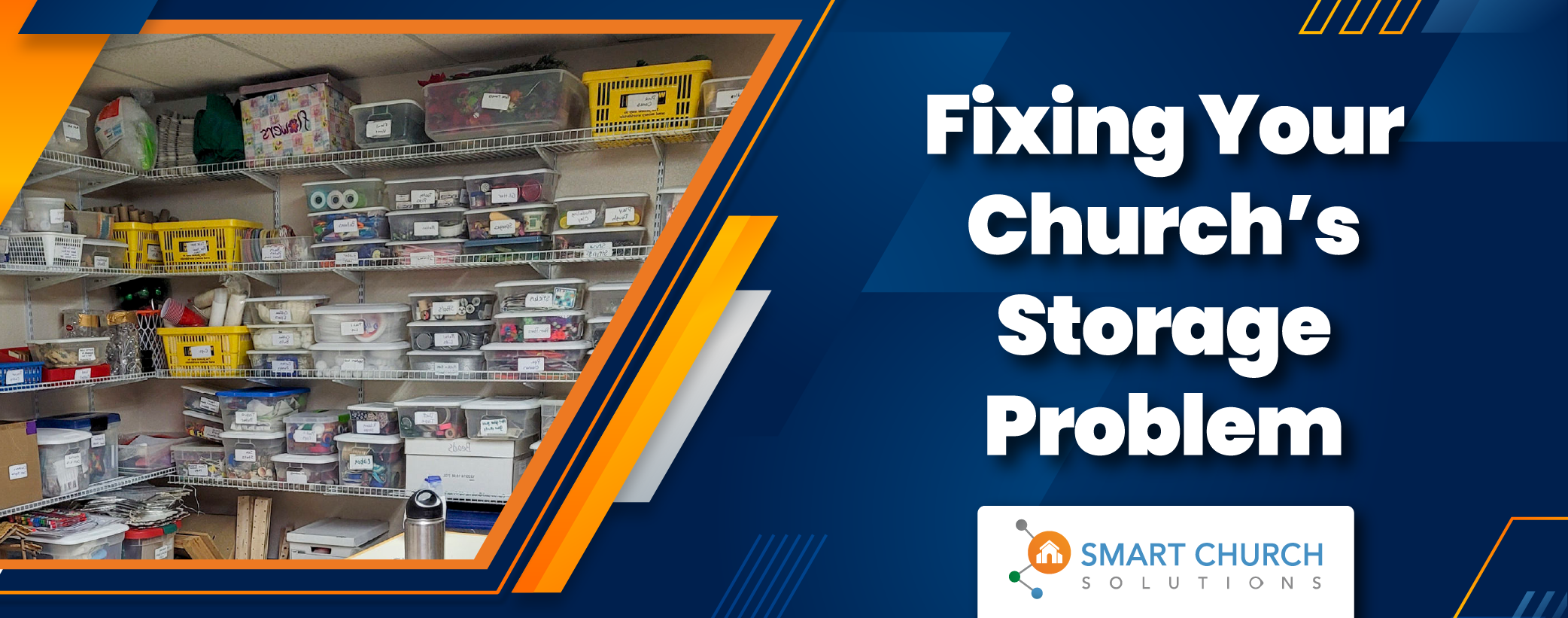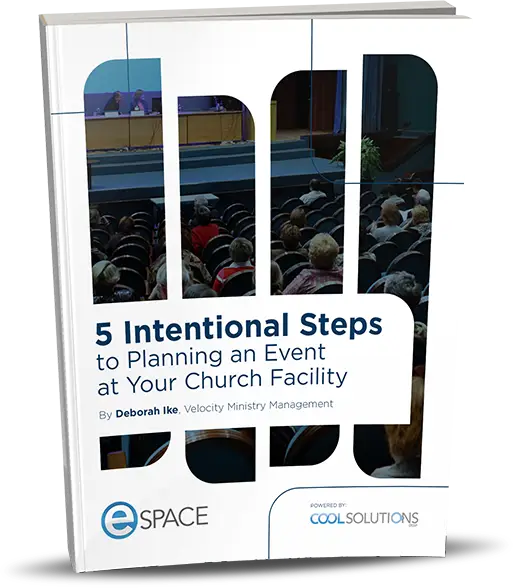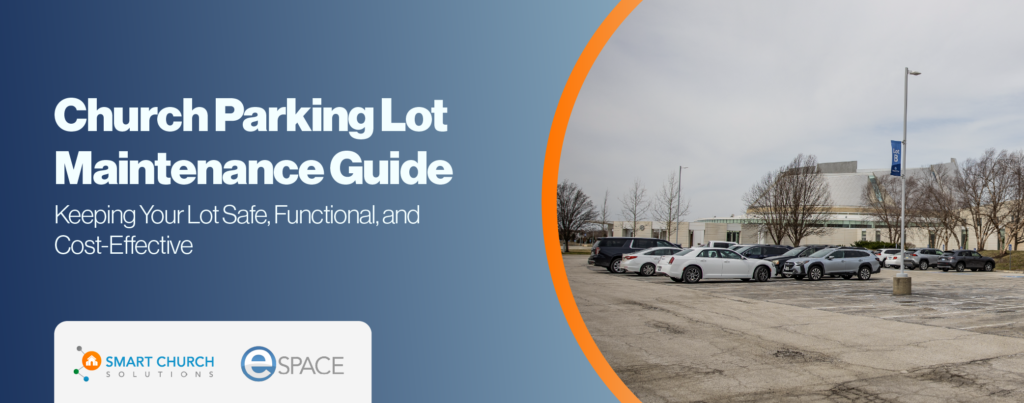Let’s be honest—how many of us in church leadership have looked at our storage spaces and said, “We just don’t have enough room”? I’ve seen it time and time again: closets packed to the brim, utility rooms overflowing, and random items stashed in every available corner. But here’s the truth: most churches don’t have a storage space problem. What they really have is a retaining problem.
Let’s unpack that together.
The Storage Problem Isn’t About Space—It’s What We’re Holding Onto
Churches are notorious for holding onto things. Whether it’s outdated seasonal decorations, broken equipment, or stacks of old curriculum, these items tend to accumulate under the premise that “we might need this someday.” The issue isn’t the size of the storage room—it’s what’s inside it.
When we retain items that no longer serve a purpose, we crowd out the things we need. Storage areas become unusable, and the ministry gets bogged down in the clutter. In addition, we will use spaces that are NEVER to be used for storage, such as your fire riser room, electrical closets, and mechanical room. If you are using these rooms for storage, I suggest you invite your local building inspector, OHSA inspector, and fire marshall to come and inspect these spaces for you and see what they say (actually – don’t do that…just clean them out!)
Why Churches Tend to Retain Too Much
There are a few common reasons churches find themselves in this situation:
- Sentimental Value
Churches are rich in history and relationships, so attaching meaning to items is easy. That old pulpit, choir robe, or VBS banner might feel like a piece of the church’s legacy, and letting go can feel like erasing the past. - Fear of Waste
Churches operate on tight budgets. Throwing something away can feel irresponsible, especially when it might be useful someday. - No Clear System for Decluttering
Things tend to pile up without a process for evaluating what stays and what goes. The default becomes, “Just put it in storage.” - Indecision
Many churches don’t have a designated person or team to decide what to keep. When no one is in charge, nothing gets done.
The Impact on Ministry
When retention runs unchecked, it creates more than just a messy storage closet. It affects the church’s ability to function and serve effectively.
- Wasted Time: Staff and volunteers spend countless hours hunting for items buried in the clutter.
- Increased Costs: Cluttered storage spaces are harder to maintain and can even create safety hazards over time.
- Missed Opportunities: When storage areas are full, there’s no room for new tools, resources, or ministries.
- Poor Stewardship: Holding onto unused items takes up valuable space that could be better utilized.
Friends, this isn’t just about logistics—it’s about stewardship. God has entrusted us with our facilities, and it’s our responsibility to manage them wisely.

Moving from Retaining to Releasing
So, how do we fix this problem? It starts with a shift in mindset. Instead of asking, “What if we need this someday?” ask, “Does this item help us fulfill our mission today?” Here are some practical steps to get started:
Church Storage Tips
1. Release with Purpose
Letting go doesn’t mean being wasteful. Consider donating unused items to another ministry or charity. That stack of old chairs or those extra choir robes could be a blessing to someone else. Here is a radical idea. What if you move all of your non-essential storage offsite (items you do not use every week)? If people want to store the cantata angel wings from 1966, they will need to load up their vehicle and drive to an offsite location. In addition, place a large dumpster in a judicious location so that when people are transporting those beloved angel wings, they have to drive by and make a conscious decision whether or not to keep moving or to deposit them in the dumpster—just saying.
2. Create Clear Guidelines
Develop a system for evaluating what stays and what goes. For example:
- Has this item been used in the last two years?
- Is it in good condition?
- Does it align with our current ministry needs?
- Is there a definitive and strategic plan to use this item again in the next 1-2 years?
- Establish the cost of the item and how much it will cost to store that item if you were paying for an offsite storage facility. Remember that whether you rent an offsite storage unit or not, there is a cost to the space you use for storage, even if on your own campus.
If the answer is no or the cost of storage exceeds the cost of replacement, it’s time to let it go.
Know Your Space: Utilize the Facility Data Sheet
Gain a comprehensive understanding of your facility’s layout and storage capacities. This free Facility Data Sheet helps you inventory spaces and equipment, aiding in effective decluttering and organization.
3. Schedule Regular Decluttering Days
Make it a habit to clean out storage spaces annually, bi-annually, or even more often. Bring together staff and volunteers to tackle the clutter and celebrate the progress.
4. Empower a Decision-Making Team
Assign a person or team to oversee retention and decluttering. Having someone take ownership ensures that decisions are made consistently and efficiently. What if you gave your facility steward the authority to establish a “use it or lose it” plan for all your storage areas?
Empower your team with eSPACE Work Order & Asset Management. Efficiently assign tasks, track maintenance, and manage assets to keep your church organized and clutter-free. Learn how it works.
5. Prioritize Accessibility
Organize storage spaces so that frequently used items are easy to access. If something is buried in the back of a closet, it’s not serving its purpose.
6. Teach Stewardship Principles
Help your congregation understand the importance of facility stewardship. This isn’t just about tidying up—it’s about honoring God by managing the resources He has given us. When your congregation understands that your built environment would cost $250-300/SF to build new, and you have a 10’ x 10’ room (100 SF), that space has a value of $25-30,000. Is that level of investment for storage the best financial and facility stewardship?
A Biblical Perspective on Retention
Scripture reminds us of the importance of letting go of what hinders us. Hebrews 12:1 encourages us to “throw off everything that hinders,” while Ecclesiastes 3:6 tells us there is “a time to keep and a time to throw away.”
Holding onto clutter isn’t just a logistical issue—it can also hold us back spiritually. When we release what no longer serves our mission, we make room for what God has planned for the future.
Final Thoughts on Church Storage Problems
Let’s face it: churches don’t usually need more storage space. They need less clutter. By addressing the retention problem, we free up space—physically, emotionally, and spiritually—for ministry to thrive.
So, the next time you look at that packed storage closet and think, “We need more room,” take a step back and ask yourself, “What can we release to make better use of the space we already have?”
Trust me, when we let go of what’s holding us back, we create room for God to do something new. And isn’t that what ministry is all about?








